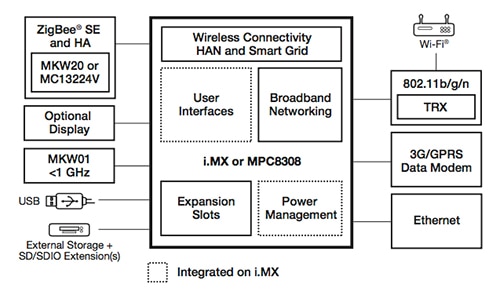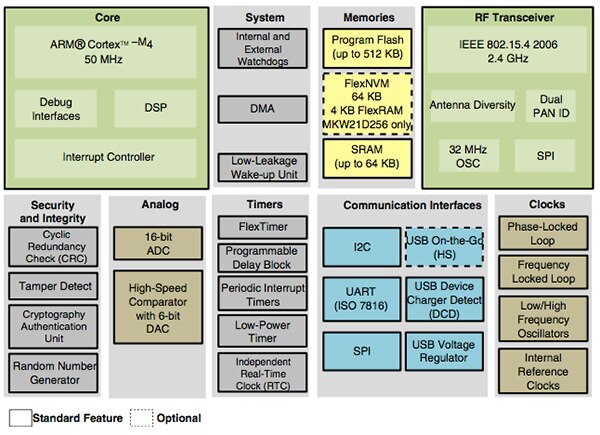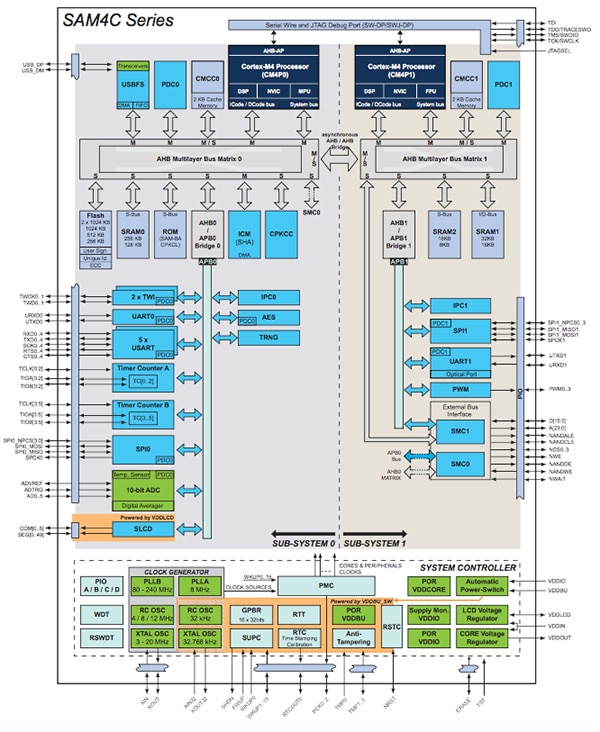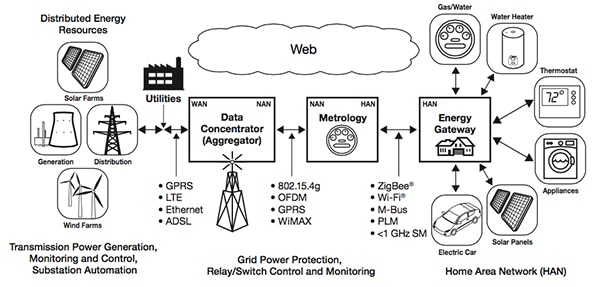Smart Energy Requires Solutions that Integrate RF, MCU, and Security in a Single Device
投稿人:DigiKey 欧洲编辑
2015-09-24
The commercial drive for smarter energy is easy to understand; the cost of saving 1 kW-hr of electricity has been estimated to be around 1.7 cents, while the cost to generate 1 kW-hr is now thought to be around 10 cents. However you look at these numbers, there are savings to be made. Legislation is also playing a role, as governments eager to be seen as progressive are putting in place the requirements for smart energy, with which providers must comply.
The fact that the utility companies are obliged to install and maintain a smart energy network means they will clearly incur costs initially, presumably with the understanding that they will reap the benefits later. Nevertheless, the cost and functionality of smart meters must be both low and comprehensive if the providers are to see those potential benefits.
This is putting pressure on, or creating an opportunity for, semiconductor manufacturers to produce the right solutions and, increasingly, those solutions are MCU-based but with very specific features for this rapidly evolving market.
In your network
The key to a smart grid is in creating not one single network, but a series of networks that increase in size, to a point where they encompass all the devices that need to be monitored. This has given rise to a hierarchy of networks such as the Home Area Network (HAN) and Neighborhood Area Network (NAN), which, in turn, become a Local Area Network (LAN) and/or Wide Area Network (WAN).
At each point the protocol and physical interface will likely be different, so preserving security, performance and data integrity at every stage requires devices that understand these requirements and are able to work within these limitations.

Figure 1: Freescale offers a wide range of MCUs targeting specific areas of the Smart Grid.
Figure 1 shows Freescale’s suggestion for a Home Energy Management System, which would have a number of functions including the collection of real-time energy consumption from the smart meter and other in-house devices; provide user feedback about how energy is used locally; allow the user to control other locally connected appliances; and provide a ubiquitous link to a broadband connection. While the heart of the system would be based around processors, the wireless interface would be implemented by a device such as the MKW20.
This wireless-enabled MCU has an ARM Cortex-M4 core at its heart, coupled with a fully compliant 802.15.4 transceiver, which can operate on one of sixteen selectable channels in the 2.4 GHz frequency ISM band (Figure 2).

Figure 2: MCUs that integrate RF transceivers, like Freescale’s MKW20 family, are expected to be in high demand in the Smart Grid.
A similar MCU, based on the 8-bit 8051 core, is available from Silicon Labs. The Si106x/108x family is positioned for smart metering applications, particularly where power is provided from a battery, as this family can potentially operate for 20 years on a single battery, according to Silicon Labs. This could be useful for the kind of devices expected to form part of the HAN, as covered below.
Integration
Meters are expected to come in many shapes and sizes, and not only to monitor the use of energy but almost any utility, or its effect. Typical utilities would be, of course, gas and water, so flow meters will form a large part of a HAN. Using something like the Si106xx/8xx could work alongside another MCU dedicated to the metering functionality, but of course some manufacturers may want to consolidate all those functions in to a single device.
For some MCUs this may be a challenge, but Atmel has developed a solution specifically for this application area: the SAM4C Series. These are MCUs described as SoCs for smart energy applications, and it’s not hard to see why. For a start, devices in this range integrate two ARM Cortex-M4 cores; one (described as the Application or Master Core) is a Cortex-M4 running at 120 MHz, features a Memory Protection Unit and DSP instructions. The second (termed the co-processor and intended to run the metrology functions) is a Cortex-M4F and features a single-precision floating point unit (FPU). Figure 3 shows a block diagram of the SAM4C Series featuring the dual-core architecture.

Figure 3: Atmel’s SAM4C Series offers dual ARM Cortex-M4 cores to combine application code with communications and security.
It supports high-performance AES 128 to 256 cryptography and features a TRNG (true random number generator), Public Key Accelerator and Integrity Check Module based on Secure Hash Algorithm (SHA1, SHA224, SHA256). It also offers up to four physical anti-tamper detection I/Os with time stamping and immediate Clear of General Backup Registers. These features allow the SAM4C Series to integrate an application layer, communications layers and security functions in a single device.
The need for security is, obviously, high in a smart energy application, and it is here where some manufacturers are really pushing technology to deliver new and innovative solutions, as described next.
Snooping
Many MCUs now provide on-chip cryptography compliant with standards including 3DES, AES, RSA and ECC, and are already used in protocols such as ZigBee, Wi-Fi and Bluetooth. Hardware acceleration of cryptography is also becoming more common, particularly in MCUs targeting the smart energy sector. An integral part of running encryption algorithms is secure key storage and it is here that Texas Instruments’ Ferroelectric RAM (FRAM) based MSP430 devices might be of particular interest.
Unlike Flash memory, FRAM does not require a charge pump, and this has two benefits; firstly it means the MCU requires less power to read/write to the memory, making it feasible to do so more often in a battery-powered application. For a smart appliance, smart flow meter or smart heat meter this would offer significant benefits for time-in-service between battery changes. But perhaps more significantly, from a security point of view, is that because there is no charge pump required, there is no ‘telltale’ power-spike taking place just before the key is stored. It is this signature that unwanted snoopers would be looking for in order to capture the key.
Another benefit of the MSP430F6 family, in a security-sensitive application, is the guarantee that it will complete an FRAM write even if power is removed during the process. It achieves this by integrating an on-chip capacitor that stores enough power to complete the process. This contrasts with a Flash- or EEPROM-based device, which must make a copy of the data being stored in case of a power failure during the process. Clearly, from a security point of view, it would be better to avoid such a scenario, and FRAM offers this advantage.
Conclusion
The Smart Grid and Smart Metering industry is naturally dominated by standards such as IEC 62056, covering recognized specifications such as DLMS (Device Language Message Specification) and COSEM (Companion Specification for Energy Metering), as well as protocols including ZigBee, Bluetooth and Wi-Fi (not to mention Thread, Weightless and others now appearing). Supporting these standards and specifications, while still offering a level of differentiation, is key to semiconductor providers remaining in this market and continuing to develop innovative and advantageous solutions. Fortunately, the industry is alive with such innovation and the promise of the Smart Home, Internet of Things and even Industry 4.0 are all drawing closer together. This new landscape will ensure security of supply for all, and play an important part in bringing down the cost of energy, in all contexts of the word.

Figure 4: Freescale’s smart grid and metering solutions overview.

免责声明:各个作者和/或论坛参与者在本网站发表的观点、看法和意见不代表 DigiKey 的观点、看法和意见,也不代表 DigiKey 官方政策。









 中国
中国